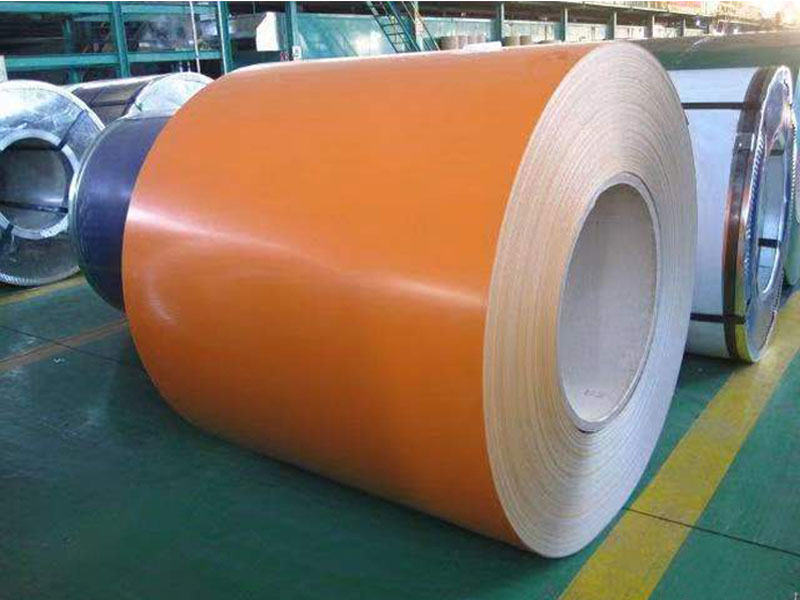
The diffuse reflection aluminum-magnesium-manganese colored aluminum plate is a third-generation functional building decoration material developed based on Al-Mg-Mn alloy substrates (Al-Mg-Mn system). Through micro-nano structured surface treatment and intelligent diffuse reflection coating, it realizes uniform light scattering, efficient UV blocking, and dynamic color presentation. Its core technological innovation lies in:
Optimized light environment: Eliminates glare hazards, reduces UV radiation damage, and enhances indoor spatial comfortability and visual health;
Energy conservation: Achieves 70-85% diffuse reflection rate (CIE 1931 standard), reducing reliance on artificial lighting and compatibility with Photovoltaic Building Integration (BIPV) scenarios;
Aesthetic breakthrough: Breaks the cold-hard texture of traditional metal panels through nano-optical regulation, enabling dynamic visual effects such as color gradients and light-shadow interactions, simulating natural light or artistic patterns.
Base Material Performance Upgrade
Alloy composition design: Al-Mg-Mn system (Mg 5.2-6.8%, Mn 1.5-2.2%) with fine-grained structure (average grain size ≤12 μm) and β-phase stabilization, achieving strength (≥300 MPa) and corrosion resistance (ASTM B117-19 standard 5000 hours without rusting).
Heat treatment process: T6 solid-solution + aging strengthening, residual stress controlled ≤0.3 MPa/m², ensuring plate flatness (flatness ≤0.3 mm/m).
Diffuse Reflection Coating System
High diffuse reflectance: ≥75% reflection in visible light range (380-780 nm) per CIE 1931 standard;
UV blocking: UVA/UVB blockage rate >98%, transmitted UVA <0.1% (GB/T 18830 standard);
Color stability: Quantum dot color technology ensures ΔE <2 (Pantone 2023 annual color card calibration) over 10 years.
Multi-layer composite structure:
| Layer | Material/Process | Functional Characteristics |
|---|---|---|
| Bottom layer | Epoxy zinc-chromate coating (15-20 μm) | Corrosion resistance, alkali/acid resistance (pH 2-12) |
| Middle layer | Fluorocarbon resin + nano-silica beads (50-200 nm) | Adjustable diffuse reflection rate (40-85%) |
| Top layer | Nanopatterned grating film (period 50-500 μm) | Directional scattering control (±15° angle) |
Optical performance:
Surface Texture Customization Technology
Dynamic light-shadow effects: Color gradients with angle-dependent changes (e.g., Monet’s Water Lilies effect);
Biomimetic optical textures: Simulates butterfly wing scales for optimal natural light distribution (illuminance fluctuation <5%).
Femtosecond laser micro-nano processing: Uses femtosecond lasers to engrave periodic microstructures (period 50-500 μm) on surfaces, combined with fractal algorithms to achieve:
| Metric | Diffuse Reflection Al-Mg-Mn Plate | Traditional Fluorocarbon Aluminum Plate | Glass Curtain Wall |
|---|---|---|---|
| Diffuse Reflectance | 70-85% (adjustable) | <10% | 15-30% (Low-E dependent) |
| UV Blockage Rate | 98% | 90-95% | 99% (Single-silver Low-E glass) |
| Thermal Conductivity | 1.2 W/(m·K) | 1.6 W/(m·K) | 1.0 W/(m·K) |
| Strength/Weight Ratio | 300 MPa / 2.8 kg/m² | 220 MPa / 3.2 kg/m² | 250 MPa / 4.1 kg/m² |
| LCA Carbon Emission | 16.2 tCO₂/km² | 20.5 tCO₂/km² | 32.8 tCO₂/km² |
| Maintenance Cycle | 25 years (self-cleaning coating) | 10 years (manual cleaning) | 5-8 years (glass replacement) |
Eco-building Facades
Singapore’s ‘Ripple of Light’ Building: Uses gradient diffuse reflection plates for uniform daylight distribution, reducing lighting energy consumption by 40%, earning LEED Platinum certification.
Beijing Daxing International Airport Terminal: Applies biomimetic vein texture plates to mitigate glare, improving passenger visual comfort by 30%.
PV Building Integration (BIPV)
Heliatek Solar Film Integration: Optimizes light absorption paths via surface microstructures, boosting photovoltaic efficiency from 18% to 20.2%.
Cultural & Public Facilities
New York High Line Park Art Corridor: Dynamic light-color boards create angle-dependent visual effects, attracting over 5 million visitors annually.
Production Workflow
Chemical polishing (Ra≤0.4 μm) → nanopatterned grating fabrication → fluorocarbon spraying (four-coat, three-bake process, film thickness ≥60 μm).
Vacuum melting (Al-Mg-Mn alloy ingots, purity ≥99.95%) → casting → hot rolling (thickness 1.2-3.0 mm) → T6 heat treatment.
Base material preparation:
Surface treatment:
International Certifications
REACH SVHC exemption (PFOS/PFOA-free);
EU RoHS 2.0 (heavy metal limits compliant).
ASTM E312-17 (60° gloss: 85±3);
ISO 12944-2 (Class 5, 5000-hour salt spray test).
Material performance:
Environmental standards:
Market size: Expected to reach $12B globally by 2025, with CAGR 18.7%, driven by green building and smart city demands.
Technology frontiers:
Photothermal synergy: Develops selective coating for summer cooling (reflectance >90%) and winter heating (absorption >60%);
Digital customization: AI-powered texture design platform enabling real-time light-effect simulation and parametric production.
The diffuse reflection aluminum-magnesium-manganese colored aluminum plate represents a paradigm shift in building materials through the integration of materials science and optical engineering. It transcends traditional passive protective roles as a "skin" to become an active intelligent medium for light environment regulation. With global advancements in sustainable architecture, health-centric design, and aesthetic innovation, this material will emerge as a core choice for supertall buildings, cultural hubs, and renewable energy infrastructure, heralding a new era of "light-color symbiosis" in architecture.